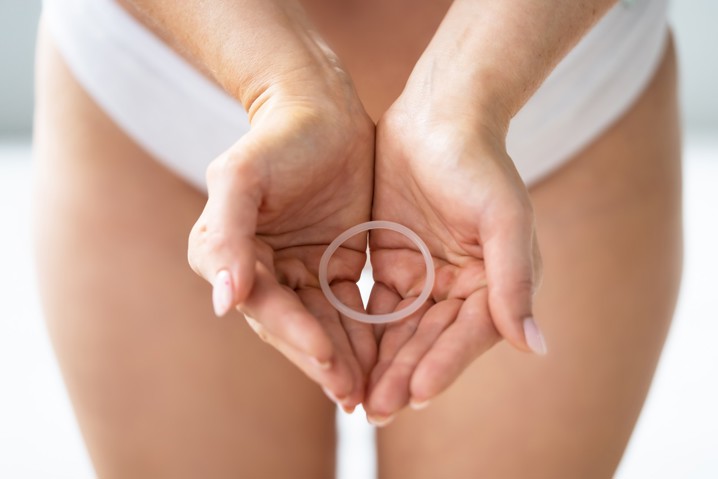

The most common form of urinary incontinence
One of the most common forms of urinary incontinence in the general population is stress incontinence.
It is most common in women between the ages of 45 and 49. In patients with stress incontinence, there is an involuntary outflow of urine when intra-abdominal pressure increases (e.g. exertion, coughing, sneezing, laughing, etc.), without contraction of the bladder.
The mechanisms by which stress incontinence is described include urethral hypermobility and damage to the internal urethral sphincter.
It is believed that urethral hypermobility results from insufficient “support” of the pelvic floor muscles and vaginal connective tissue under the urethra (urethra) and bladder neck. As a result, the urethra and bladder neck lose their ability to close completely against the front wall of the vagina.
With an increase in intra-abdominal pressure (e.g. exertion, coughing, sneezing, laughing, etc.), the muscular tube of the urethra does not close, which leads to involuntary and uncontrolled urine outflow, i.e. incontinence.
Insufficient “support” of the urethra may be associated with loss of connective tissue and/or due to a continuous increase in intra-abdominal pressure (i.e. in chronic cough or obesity) or trauma caused by vaginal delivery.
Vaginal delivery can cause direct trauma to the pelvic muscles, and can also damage the nerves, leading to atrophy and dysfunction of the pelvic muscles.
Intrinsic sphincter defect (ISD) is another form of the mechanism of stress urinary incontinence that results from damage to the mucous membrane and muscle tone of the urethra that normally keeps the urethra closed.
ISD is the result of neuromuscular damage and can be seen in women who have had multiple pelvic surgeries or incontinence. ISD can occur in the presence or absence of urethral hypermobility and usually results in severe urine leakage, even with a minimal increase in abdominal pressure.
Stress urinary incontinence often causes feelings of discomfort, fear and shame, which can result in many individuals not seeking professional help. However, it is important to note that the onset of incontinence can be cured or controlled in many cases, especially if treatment is started in the early stages. During the conversation with the doctor, it is possible to determine what form of urinary incontinence it is during the taking of the anamnesis (medical history) and presenting the symptoms. Diagnostic procedures, with a conversation between the patient and the doctor, may include:
Early access to a specialist, along with diagnostic procedures, is a crucial step towards timely recognition and management of stressful urinary incontinence.
The best time to start treating stress incontinence is when the first symptoms appear. The choice of therapy depends on the severity of the symptoms and the assessment of the specialist.
There are various treatment options, and some of them include:
1. Kegel exercises: Kegel exercises are aimed at strengthening the pelvic floor muscles. These muscles support the urethra, vagina and anus and play an important role in maintaining continence during activities such as sneezing, coughing or physical exertion. Performing Kegel exercises regularly can improve pelvic muscle tone and reduce incontinence symptoms.
2. Intravaginal rings: Intravaginal rings are flexible rubber or silicone devices that are placed in the vagina. These pessaries help lift the bladder neck and urethra, thereby relieving the symptoms of stress incontinence. Their use requires regular medical check-ups.

3. Surgical treatment: Surgical treatment is used in people with moderate to severe symptoms of stress incontinence who have not made satisfactory progress with exercise. Surgeries have a long-lasting effect, but each method carries its own risks and complications. Surgical treatment is usually not recommended for women who are planning a pregnancy.
The inability to control urine during sexual activity is one of the symptoms of urinary incontinence, often overlooked and potentially impairing sexual health. Sexual health encompasses the well-being of an individual on a physical, mental, emotional and social level in the context of sexuality. The sexual response goes through four stages: libido (desire), arousal, orgasm, and pleasure.
Most women who suffer from stress urinary incontinence experience coital incontinence (incontinence during sexual intercourse) already during penetration or even during orgasm. This problem can affect any stage of the sexual response. It is important that women who notice these symptoms consult a doctor at the first appearance of symptoms in order to receive appropriate advice and therapeutic options.
At the Lohuis Filipović Polyclinic, we have gathered a team of experts who will make sure that incontinence problems become part of your past. Through open communication and modern working methods, we strive to find an adequate solution for you.
Make an appointment today by calling +385 1 2444 646 or by filling out our online form.
The main goal of LF Polyclinic is to improve the quality of life and health of our clients by providing them with top-notch healthcare services.